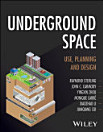Static Creep Micro-Macro Fracture Mechanics of Brittle Solids
Dec 2023 · Springer Nature
Ebook
233
Pages
reportRatings and reviews aren’t verified Learn More
About this ebook
This book gathers a large amount of recent research results on this topic to better understand the static creep micro–macro fracture mechanics in brittle solids (e.g., glass, ceramic, concrete, ice, and rock). To be precise, this is about to explore the effects of the external factors of stress paths, water content, seepage pressure, dynamic disturbance, thermal treated temperature, and the internal factors of crack angle, size, recovery, and nucleation coalescence on the static creep fracture mechanical properties in brittle solids. This book provides important theoretical support in evaluation for long-term lifetime in the brittle solid engineering (e.g., deep underground engineering, architecture engineering, aerospace engineering, and mechanical manufacturing engineering).
About the author
Xiaozhao Li received his Ph.D. degree in geotechnical engineering in 2016 from Xi’an University of Architecture & Technology, China. He did his post-doctoral research in Beijing University of Civil Engineering and Architecture (BUCEA) during 2016–2019. He joined the School of Civil and Transportation Engineering of BUCEA in August 2016, and he became an associate professor in 2020. He achieved the Shaanxi Province Excellent Doctoral Dissertation Award in 2018. He is the member of Engineering Safety and Protection Branch and Deep Earth Space Exploration and Development Branch of Chinese Society of Rock Mechanics and Engineering. His research interest is focused on the micro–macro-fracture mechanics of brittle solids. He presided over the completion of 1 program of National Natural Science Foundation of China and 1 program of the Postdoctoral Science Foundation of China. He has published over 40 research articles.Zhushan Shao obtained doctoral degree inmechanics in 2005 from Xi'an Jiaotong University, China. He did his post-doctoral research in the National University of Singapore during 2005–2006. He was a research fellow in Nanyang Technological University of Singapore during 2007–2008. He joined the School of Civil Engineering of Xi’an University of Architecture & Technology in 2009. He is currently the dean of the School of Science at Xi'an University of Architecture and Technology. His research interest is focused on the disaster prevention and reduction in underground engineering, numerical methods and their engineering applications, and thermoelasticity of composite materials. He won the second prize of the National Natural Science Award in 2013. He presided over the completion of more than 10 projects of the National Natural Science Foundation and provincial- and ministerial-level projects.Chengzhi Qi obtained doctoral degree in Geophysics in 2007 from Moscow University, Russia. He is a “Cheung Kong scholar” awarded by the Administration of Education of China. He is the dean of Graduate School of Beijing University of Civil Engineering and Architecture. He is the chairman of Engineering Structure Safety and Protection Branch of Chinese Society of Rock Mechanics and Engineering. His research interest is focused on engineering structure seismic, nonlinear rock mechanics, and impact dynamics. He won two first prizes and one second prize of the National Science and Technology Progress Award. He presided over the completion of more than 10 projects of the National Natural Science Foundation and 973 major project, sub-projects, and provincial- and ministerial-level projects.
Rate this ebook
Tell us what you think.
Reading information
Smartphones and tablets
Install the Google Play Books app for Android and iPad/iPhone. It syncs automatically with your account and allows you to read online or offline wherever you are.
Laptops and computers
You can listen to audiobooks purchased on Google Play using your computer's web browser.
eReaders and other devices
To read on e-ink devices like Kobo eReaders, you'll need to download a file and transfer it to your device. Follow the detailed Help Center instructions to transfer the files to supported eReaders.





